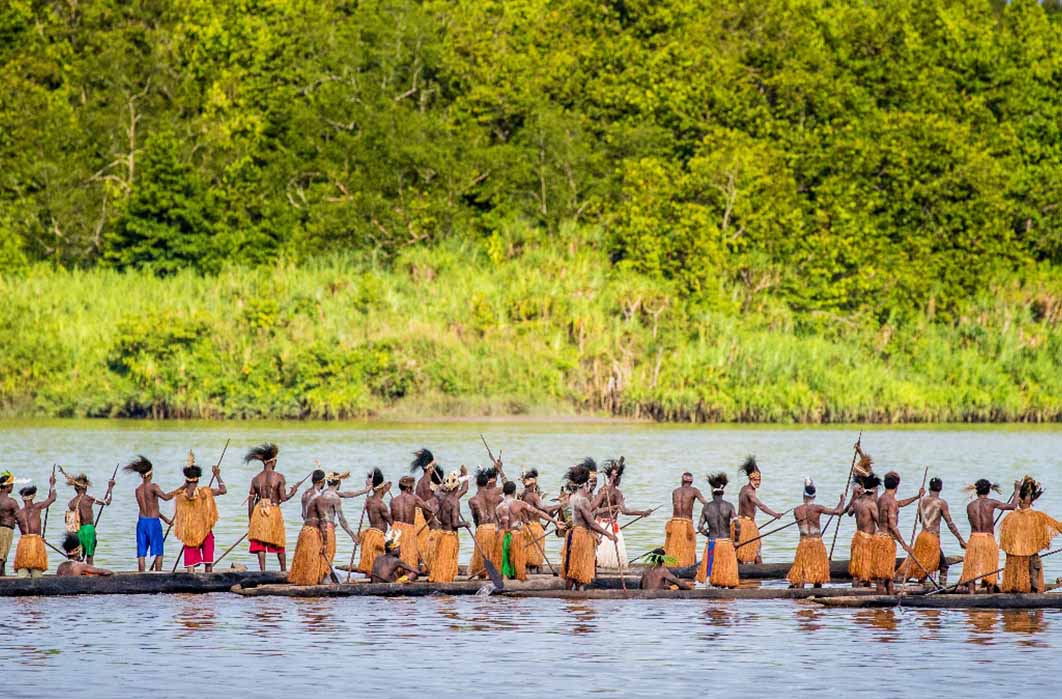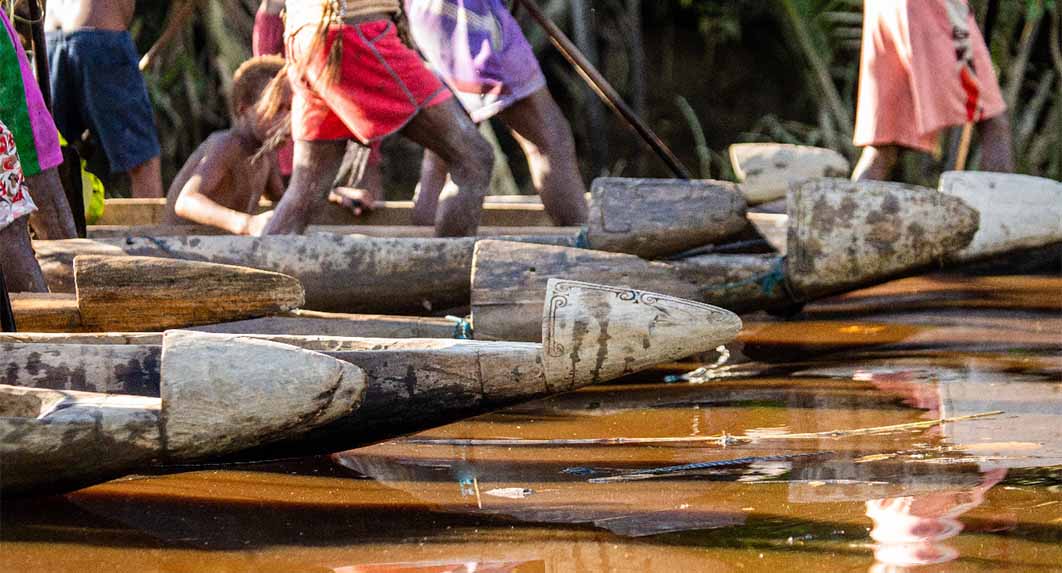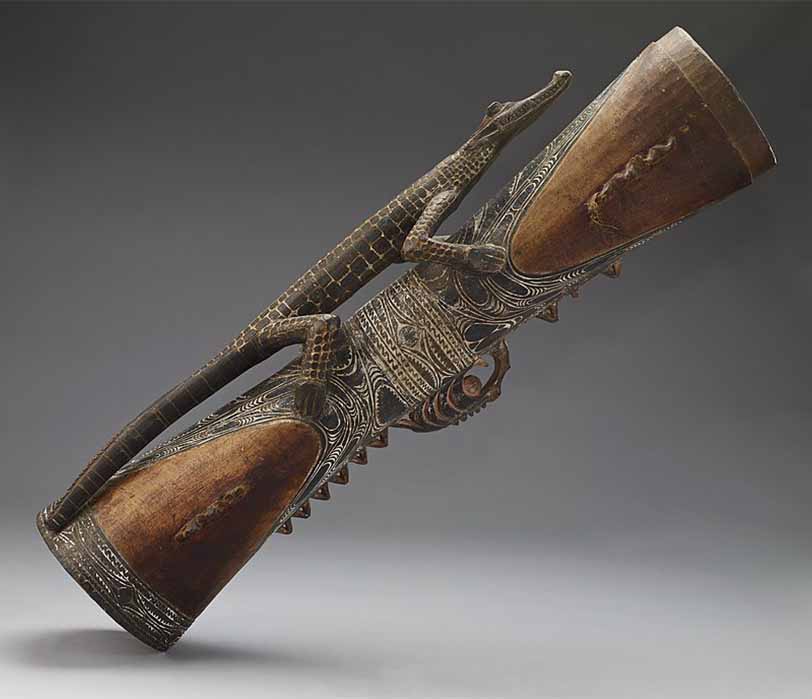
Papua New Guinea’s Sepik River Rituals
Winding its way like a serpentine from its origin source in the Victor Emanuel Mountain Range in the central highlands of Papua New Guinea, the Sepik River receives many tributaries along its way until it finally flows directly into the Bismark Sea, off the island’s northern coast. Being the longest river in New Guinea and the second longest in the Oceania isles, it meanders for 700 miles (1,126 kilometers), past about 100 villages, each giving its own name to their stretch of the waterway. The river was called Azimar, Abschimaby and Avuset by some, and Sepik by others. As the Sepik basin is mostly untouched by modern development, life along the river has similarly been passed undisturbed for millennia.

Papua New Guinea stilt houses raised on piles built along the rivers to avoid flooding, created from bamboo and reinforced with deck boards (acrogame /Adobe Stock)
The Ways Of The Waters
The river flows from the mountain, through swamp lands and tropical rain forests and it is navigable most of the way, so dug-out outrigger canoes have for centuries served these people as a form of transport for trade purposes and war. A kewou is a dug-out canoe, carved from a single tree trunk, yet the trees have spirits and therefore the right tree must be selected and its spirit asked permission to be felled. Sailau is the word for sailing the double-hull canoes, rigged with a mast, and it requires some skill as sailau do not tack like other yachts, instead, they swap ends, the bow becoming the stern (shunting) thus keeping the outrigger permanently to windward, but navigating is a trait embedded in the cell memory of people of the Pacific Ocean, who tacked their ways across oceans, using the stars and the winds. Sails are makeshift, using anything from banana leaves, to cloth, tarpaulin or rice sacks sewn together like a quilt. The kula is the double-hull sailboat, used for long trade routes. War canoes called gebo can hold up to 30 to 40 warriors propelled by paddles. A paddle is sharpened at one end to double up as a weapon and of course all vessels are decorated with tribal art, as the warriors are painted and tattooed.

Fragments of canoe warriors of the Asmat tribe on the river (gudkovandrey Adobe Stock)
The Legend Of The Naming
Several of the tribes living along the Sepik River are collectively referred to as the Iatmul people, although they themselves would never associate with a collective name. And names have magical powers. According to legend, the world was first a primordial sea, until the wind stirred the waves and a huge pit opened – generally agreed upon to be near the Sawos-speaking village of Gaikarobi. From this pit emerged the ancestor spirits and heroes who moved outwards. With each step they gave, land appeared. As they walked, they created the world by naming everything; the trees, animals, mountains, stars, winds, rains, tributaries, villages and even people’s actions each got a name, which became totem names with magical powers. Each autonomous village has a clan, with family branches, and each still has its ancient own totem name, invoked by a ritual. The storytellers recall the oral history of the migration of the spirits encoded in long chains of complex polysyllabic names called tsagi. No two villages have the same tsagi and they act socially, politically and economically independent of each other. This practice of tsagi reminds one of the Aborigine song-lines.

Kundu drum, an hourglass shaped drum made of wood, and normally covered with a snake or lizard's skin as membrane. The crocodile is symbolic to the Iatmul people. There are three crocodiles on this instrument: the handle and each of the drum openings (Public Domain)
Men would congregate in traditional men’s houses also called spirit houses or Haus Tambaran to listen to the tsagi and practice the rituals, including male initiation ceremonies. All adornments in this spirit house including masks, sculptures and paintings are imbued with spirits.




